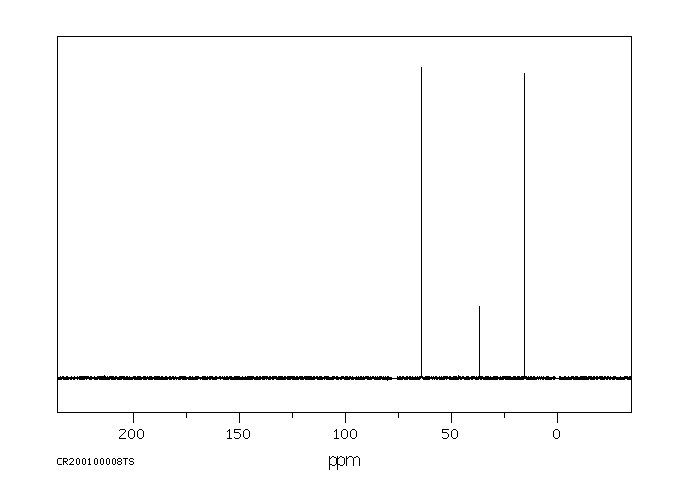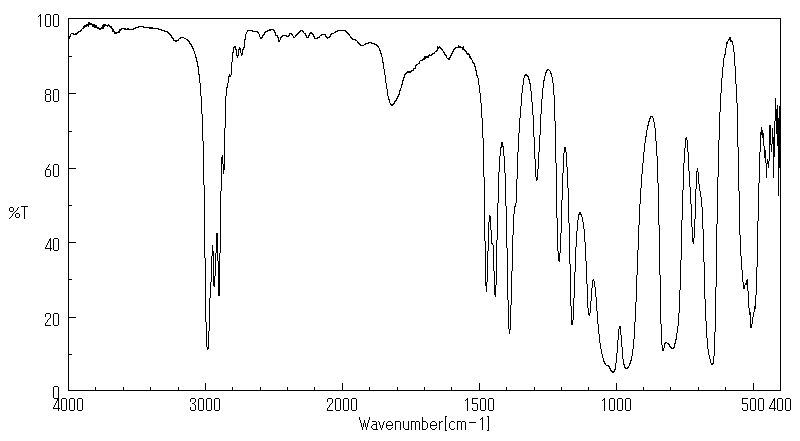乙硫磷 | 563-12-2
分子结构分类
-
物化性质
-
计算性质
-
ADMET
-
安全信息
-
SDS
-
制备方法与用途
-
上下游信息
-
文献信息
-
表征谱图
-
同类化合物
-
相关功能分类
-
相关结构分类
计算性质
-
辛醇/水分配系数(LogP):5.1
-
重原子数:19
-
可旋转键数:12
-
环数:0.0
-
sp3杂化的碳原子比例:1.0
-
拓扑面积:152
-
氢给体数:0
-
氢受体数:8
ADMET
安全信息
-
储存条件:储存注意事项:应存于阴凉、通风良好的专用库房内,并实行“双人收发、双人保管”制度。远离火种与热源,确保容器密封。需与其他化学品分开存放,特别是要避免与氧化剂、酸类、碱类及食用化学品混储。同时,须配备相应品种和数量的消防器材。储存区域应备有泄漏应急处理设备及合适的收容材料。
制备方法与用途
由O,O-二乙基二硫代磷酸酯先用碳酸氢钠转变为钠盐,再与二氯甲烷反应制得乙硫磷。具体步骤如下:将钠盐、碳酸氢钠和氢氧化钠投入反应锅中,加料量一般为每500g 60%的钠盐加入5g碳酸氢钠,并通过调节氢氧化钠用量使料液pH值达到7。接着按钠盐与二氯甲烷摩尔比1:0.7的比例加入二氯甲烷。向反应锅充入氮气,保持压力在0.2-0.4MPa。加热至100-110℃,维持5-8小时的反应时间,并保持反应压力为1-1.5MPa。反应结束后冷却至35℃。将合成的原油通过过滤去除少量滤渣后静置分层,取油层用水洗涤三次以脱水。最终可得90%左右的乙硫磷原油,收率超过70%。
合成制备方法该过程与上述“制备方法”相同。具体步骤如下:由O,O-二乙基二硫代磷酸酯用碳酸氢钠转变为钠盐后,再与二氯甲烷反应生成乙硫磷。将钠盐、碳酸氢钠和氢氧化钠投入反应锅中,加料量为每500g 60%的钠盐加入5g碳酸氢钠,并调节氢氧化钠用量使料液pH值达到7。按钠盐与二氯甲烷摩尔比1:0.7的比例加入二氯甲烷。向反应锅充入氮气,保持压力在0.2-0.4MPa。加热至100-110℃,维持5-8小时的反应时间,并保持反应压力为1-1.5MPa。反应完成后冷却至35℃。将合成的原油通过过滤去除少量滤渣后静置分层,取油层用水洗涤三次以脱水。最终可得90%左右的乙硫磷原油,收率超过70%。
用途简介作为非内吸性杀虫剂和杀螨剂,乙硫磷能够有效防治棉花、水稻、玉米、果树及花卉等作物上的叶蝉、飞虱和蓟马等多种害虫。
用途主要应用于防治棉花红蜘蛛的在、幼虫及卵,柑桔红蜘蛛、锈壁虱的成、幼虫及卵,以及棉花棉叶蝉等。作为一种有机磷杀虫、杀螨剂,具有较强的触杀作用,并有一定的杀螨卵效果。适用于防治棉花、水稻和果树作物上的害虫和害螨,也可用于拌种,以防治蛴螬、蝼蛄等地下害虫。例如,在防治棉红蜘蛛时,于成、若螨发生期或螨卵盛孵期使用50%乳油1500~2000倍液喷雾;防治棉蚜则用50%乳油1000~1500倍液喷雾。同时还能用于防治水稻飞虱和蓟马,使用50%乳油2000~2500倍液喷雾。此外,乙硫磷也可作为农药杀虫剂使用。
上下游信息
-
上游原料
中文名称 英文名称 CAS号 化学式 分子量 氯甲硫磷 chlormephos 24934-91-6 C5H12ClO2PS2 234.708
反应信息
-
作为反应物:描述:乙硫磷 在 chloroamine-T 作用下, 以 溶剂黄146 为溶剂, 反应 15.0h, 生成 Ethian (O.O.O'.O'-tetramethyl-S.S'-methylenbisphosphordithioat)参考文献:名称:Tiwari, Ashok Kumar; Dubey, Bijyendra Kumar; Shukla, Journal of the Indian Chemical Society, 2003, vol. 80, # 7, p. 717 - 719摘要:DOI:
-
作为产物:描述:参考文献:名称:Schwezowa-Schilowskaja et al., Zhurnal Obshchei Khimii, 1959, vol. 29, p. 3593;engl.Ausg.S.3554摘要:DOI:
文献信息
-
[EN] ACC INHIBITORS AND USES THEREOF<br/>[FR] INHIBITEURS DE L'ACC ET UTILISATIONS ASSOCIÉES
-
[EN] BICYCLYL-SUBSTITUTED ISOTHIAZOLINE COMPOUNDS<br/>[FR] COMPOSÉS ISOTHIAZOLINE SUBSTITUÉS PAR UN BICYCLYLE申请人:BASF SE公开号:WO2014206910A1公开(公告)日:2014-12-31The present invention relates to bicyclyl-substituted isothiazoline compounds of formula (I) wherein the variables are as defined in the claims and description. The compounds are useful for combating or controlling invertebrate pests, in particular arthropod pests and nematodes. The invention also relates to a method for controlling invertebrate pests by using these compounds and to plant propagation material and to an agricultural and a veterinary composition comprising said compounds.本发明涉及公式(I)中变量如索权和说明中所定义的自行车基取代异噻唑啉化合物。这些化合物对抗或控制无脊椎动物害虫,特别是节肢动物害虫和线虫方面具有用途。该发明还涉及一种通过使用这些化合物来控制无脊椎动物害虫的方法,以及包含所述化合物的植物繁殖材料、农业和兽医组合物。
-
[EN] AZOLINE COMPOUNDS<br/>[FR] COMPOSÉS AZOLINE申请人:BASF SE公开号:WO2015128358A1公开(公告)日:2015-09-03The present invention relates to azoline compounds of formula (I) wherein A, B1, B2, B3, G1, G2, X1, R1, R3a, R3b, Rg1 and Rg2 are as defined in the claims and the description. The compounds are useful for combating or controlling invertebrate pests, in particular arthropod pests and nematodes. The invention also relates to a method for controlling invertebrate pests by using these compounds and to plant propagation material and to an agricultural and a veterinary composition comprising said compounds.本发明涉及式(I)的噁唑啉化合物,其中A、B1、B2、B3、G1、G2、X1、R1、R3a、R3b、Rg1和Rg2如权利要求和描述中所定义。这些化合物对抗或控制无脊椎动物害虫,特别是节肢动物害虫和线虫方面具有用途。该发明还涉及一种利用这些化合物控制无脊椎动物害虫的方法,以及包括所述化合物的植物繁殖材料、农业和兽医组合物。
-
[EN] MICROBIOCIDAL OXADIAZOLE DERIVATIVES<br/>[FR] DÉRIVÉS D'OXADIAZOLE MICROBIOCIDES申请人:SYNGENTA PARTICIPATIONS AG公开号:WO2017157962A1公开(公告)日:2017-09-21Compounds of the formula (I) wherein the substituents are as defined in claim 1, useful as a pesticides, especially fungicides.式(I)的化合物,其中取代基如权利要求1所定义,作为杀虫剂特别是杀菌剂有用。
-
Thieno-pyrimidine compounds having fungicidal activity
表征谱图
-
氢谱1HNMR
-
质谱MS
-
碳谱13CNMR
-
红外IR
-
拉曼Raman
-
峰位数据
-
峰位匹配
-
表征信息










